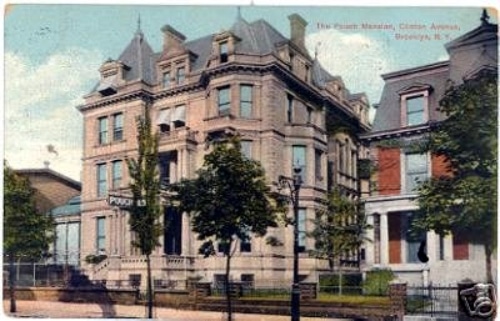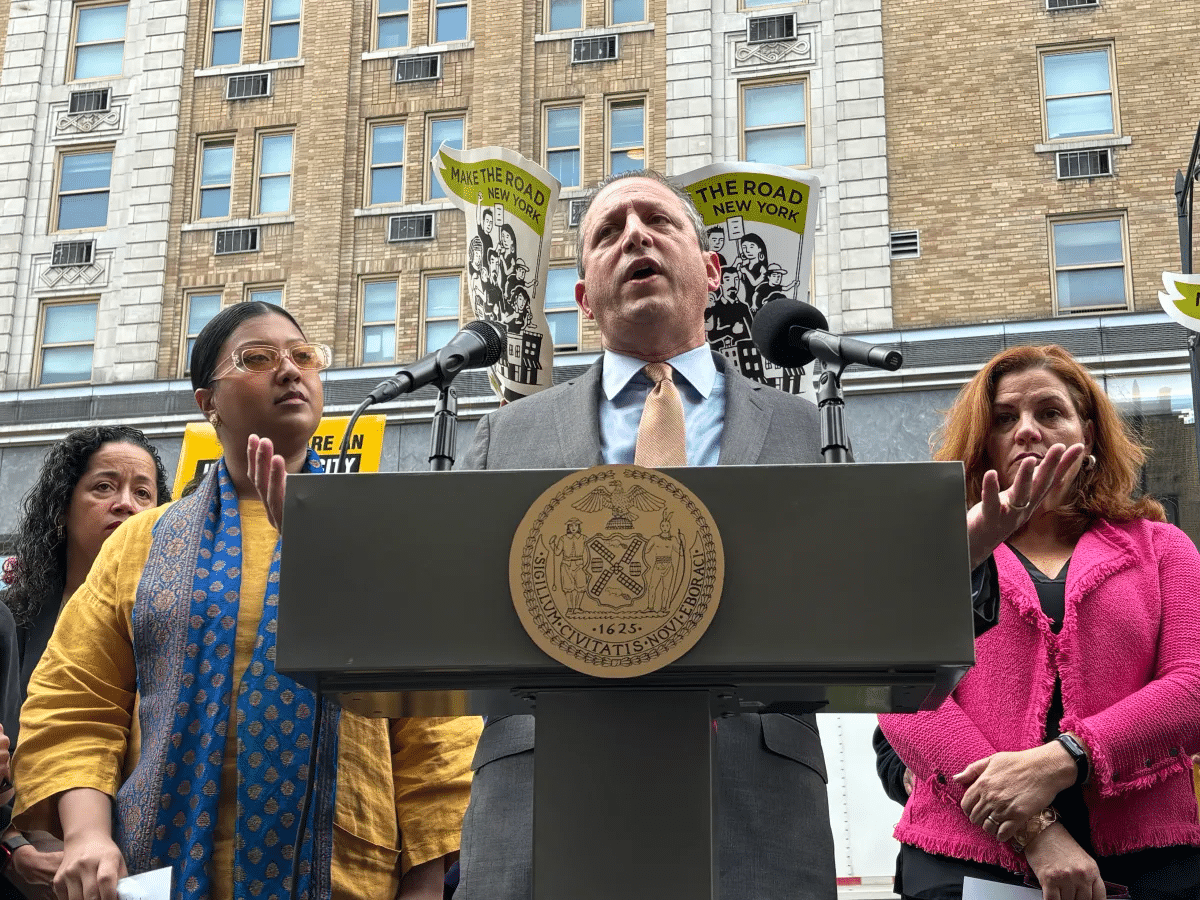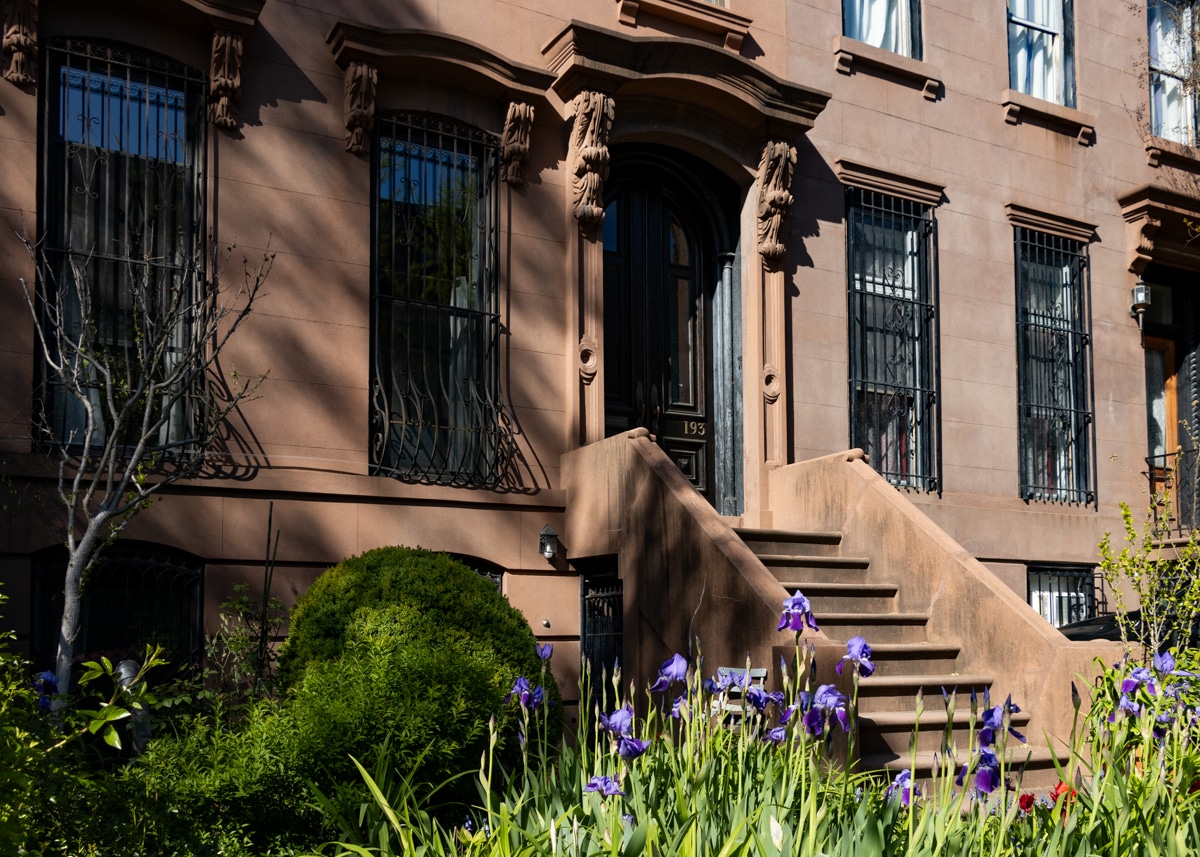Building of the Day: 404-406 Clinton Avenue
Brooklyn, one building at a time. Name: Former Batterman houses, now apartments Address: 404-406 Clinton Avenue Cross Streets: Greene and Gates Avenues Neighborhood: Clinton Hill Year Built: 1901 Architectural Style: Renaissance Revival Architect: Albert Ulrich Other works by architect: Mansion at 365 Clinton Avenue (destroyed) and many other smaller projects throughout Brooklyn Landmarked: Yes, part of…

Brooklyn, one building at a time.
Name: Former Batterman houses, now apartments
Address: 404-406 Clinton Avenue
Cross Streets: Greene and Gates Avenues
Neighborhood: Clinton Hill
Year Built: 1901
Architectural Style: Renaissance Revival
Architect: Albert Ulrich
Other works by architect: Mansion at 365 Clinton Avenue (destroyed) and many other smaller projects throughout Brooklyn
Landmarked: Yes, part of Clinton Hill HD (1981)
The story: It’s good to have rich relatives who are generous with their gifts of houses. Henry Batterman was a wealthy dry goods merchant with a large flagship store on Graham Avenue and Broadway in Williamsburg. In 1901, he commissioned architect Albert Ulrich to design twin mansions for his son, Henry, and his sister, Adelaide, here at 404 and 406 Clinton Avenue, the premiere block of the “Hill,” the very tony Clinton Hill neighborhood.
Henry Batterman had done well for himself, his H. Batterman store was the largest dry goods store in Williamsburg, and he was quite wealthy. If that wasn’t enough, he also was the president of the Broadway Bank, which was right next door to his store. Clinton Hill would be his home, but before he had a new place built for himself, he took care of his son, his sister and her husband.
Not that Adelaide’s husband needed any financial help. He was C. Walter Nichols, of the Nichols Copper Company. His father, William Henry Nichols, started his business in 1872, smelting copper and other minerals and making sulphuric acid in his Newtown Creek plant. W. H. Nichols lived just down the street, at 353 Clinton Avenue, which may be how the families met.
The twin houses were designed by Albert Ulrich, a pretty obscure Brooklyn architect. Most of his recorded work seems to be alterations to existing buildings, the design and building of some stables, factory additions, a milk processing plant, hotel extensions and the like, all in Brooklyn. His offices were at 371 Fulton Street throughout the late 1800s and through the 1920s.
The Batterman commissions seems to be Ulrich’s largest work. Batterman must have been quite pleased with the twin residences, as Ulrich went on to design a large new house for Henry Batterman himself, which stood at 365 Clinton Avenue. That house, which was said to have looked very much like these, was torn down when the Clinton Hill Apartments were built in the 1940s. The twin Batterman houses may have also shared the details of Henry’s house, which had a library of Circassian walnut, a mahogany foyer hall and a dining room of Flemish oak. Sounds quite nice.
The house that belonged to son Henry L., 404 Clinton, is now an eight-unit apartment house. The Nichols house, 406, now has nine units. Not much remains of the Batterman empire. The father’s house is gone, and the H. Batterman department store in Williamsburg is long gone as well, although the building may still be underneath the “modernized” stucco structure that now houses a Modell’s. Even the bank is gone. His brother-in-law’s family business was sold to Phelps Dodge in the 1920s, but the Nichols name lives on in the form of a building and scholarship at NYU. GMAP











What's Your Take? Leave a Comment